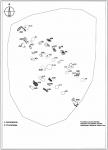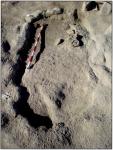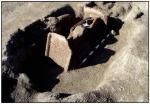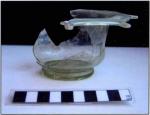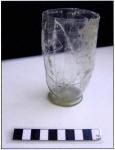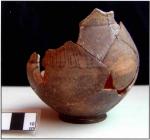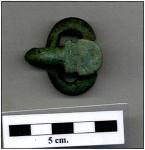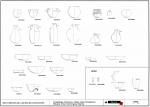Summary (English)
An archaeological excavation was undertaken in plot 14 of polygon 6 in the municipality of Malpartida, Cáceres, in order to install a photovoltaic facility. This land, which was formerly used for grazing, is relatively flat with some hills and seasonal streams.
Prior to the excavation, an intensive survey was carried out covering up the whole plot. The results showed the location of an approximately 30 ha-Roman site. The amount of 16 tombs bored into stone with no bone remains and several carved granite concretions, some of them with grooves, were registered. In addition, great quantities of brickwork material, such as tegulae and bricks were identified.
The funeral area identified has not been fully excavated. Works were only carried out on a 620 m2 extension belonging to Sector 1, in order to characterize the site. Therefore, just a biased sample of the funerary ensemble is at our disposal. However, the results suggest that the funeral area might be related to a rural settlement located in a higher area of the hillside. The funerary deposits show a wide chronological continuity from the 1st century until the 5th century AD.
33 burials, 12 cremation burials and 21 inhumation burials were excavated. Several variants were observed not only concerning the funeral rituals, burial structures and their covers, but also the materials deposited in them (ceramics and glass). Linked to one of the excavated inhumation burials, an inscribed funeral stele and two pottery pieces dated between the late 1st century and the beginning of the 2nd century AD were unearthed.
Most of inhumation burials were executed in shallow pits cut into stone. The inhumation burials were catalogued as circular with a diameter range between 0,60 and 1,20 meters. In their interior, in addition to the burnt wood and bone remains, grave goods and iron nails were found.
There is another funerary ensemble composed of two burials in sector 2, located in a mound approximately 500 meters far from sector 1. These burials are two inhumations in a single rectangular pit divided by a row of granite blocks. The burial structure’s and lid’s typology denote a late antiquity chronology. An oval-shaped belt buckle was unearthed from the tomb. It was dated 5th century AD due to its shield-shape based prong with cut outs on the sides.
(translation by Inés Lorenzo Bautista)
- Ainara Cano Echeberría
Director
- Ainara Cano Echeberría
Team
- Ainara Cano Echeberría
- Arturo Domínguez García
Research Body
- TERA S.L.
Funding Body
- Viproes Energías Renovables S.L.





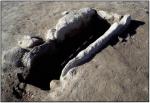
![Download [PDF]](/excavation/skins/fasti/images/results/download_sml.png)
